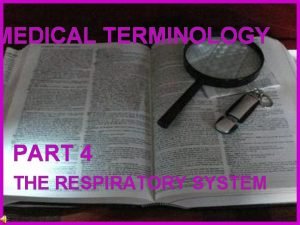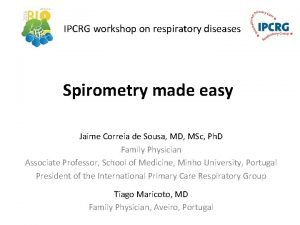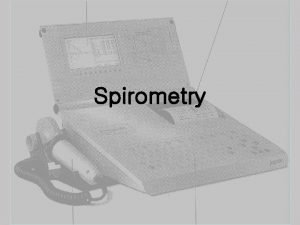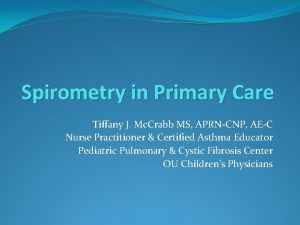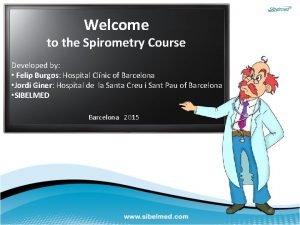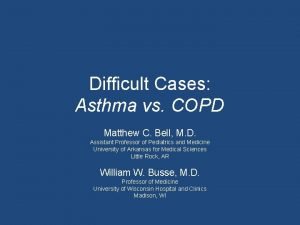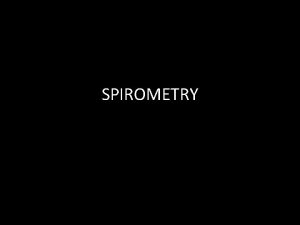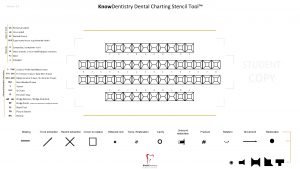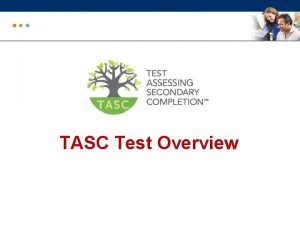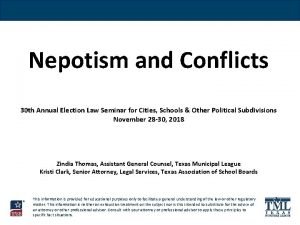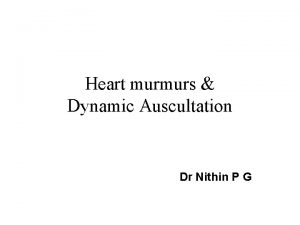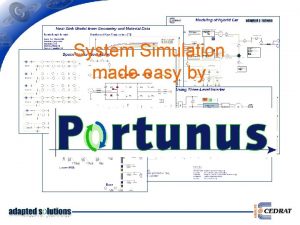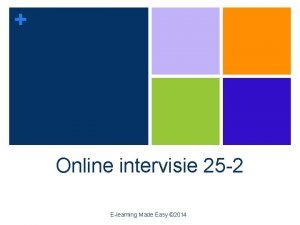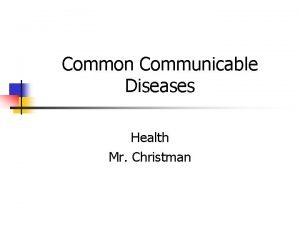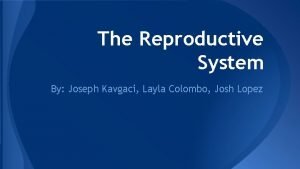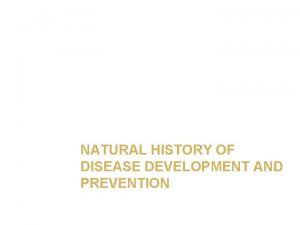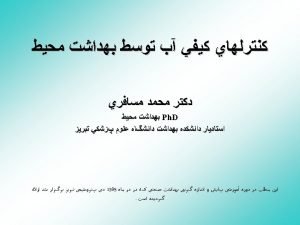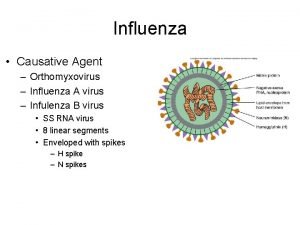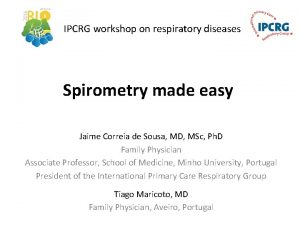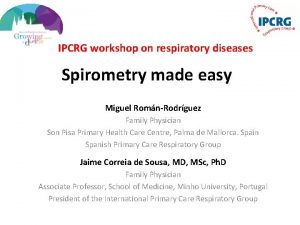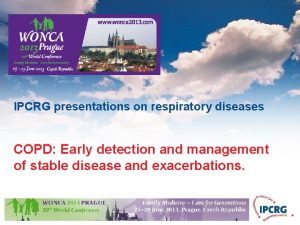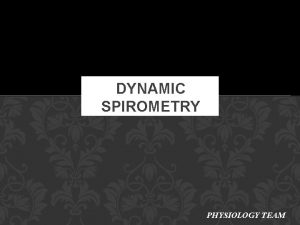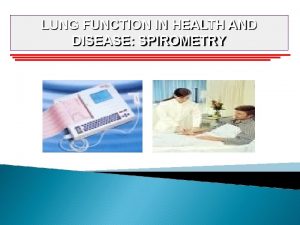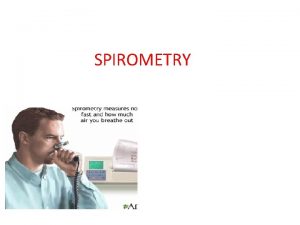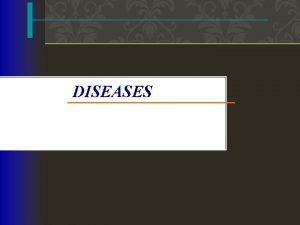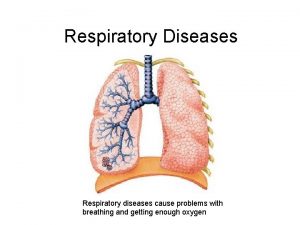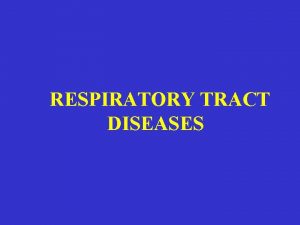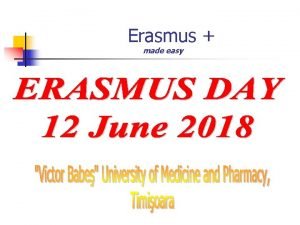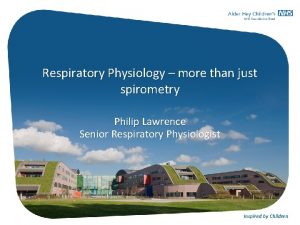IPCRG workshop on respiratory diseases Spirometry made easy
























































- Slides: 56

IPCRG workshop on respiratory diseases Spirometry made easy Jaime Correia de Sousa, MD, MSc, Ph. D Family Physician Associate Professor, School of Medicine, Minho University, Portugal President of the International Primary Care Respiratory Group Tiago Maricoto, MD Family Physician, Aveiro, Portugal

Objectives • To know the important spirometry parameters • To identify a “good quality” spirometry • To identify the different spirometry patterns • To accurately “read” the results of the test

Forced spirometry • Spirometry measures airflow and lung volumes, and is the preferred lung function test for COPD and asthma in primary care • Forced exhalation from a maximal inspiration

To understand the concept

Inspiratory Reserve Volume (IRV) Inspiratory Capacity (IC) Total Lung Capacity (TLC) Vital Capaciity (VC) Tidal Volume (TV) Expiratory Reserve Volume (ERV) Residual Functional Capacity (RFC) Residual Volume (RV)

Important measurements FVC: Forced Vital Capacity • Volume of air exhaled after full inspiration and full exhalation FEV 1: Forced Expiratory Volume in 1 second • Volume of air exhaled in the first second of forced exhalation. FEV 1 / FVC: • Ratio of vital capacity exhaled in 1 second expressed as a percentage of the total volume of air exhaled after full inspiration and full exhalation

FVC Total volume of exhaled air in a forced expiratory manoeuvre after a maximal inspiration. The less total volume /capacity the less FVC

FEV 1 Exhaled volume in the first second of a forced expiration after a maximal inspiration. If there is an obstruction, the FEV 1 is diminished

Bronchial obstruction generates less volume in the first second

Airflow Flow FEV 1 / FVC Best obstruction measurement % of forced vital capacity expelled during the first second Flow Airflow

Factors that influence normal values Height – Tall people have larger lungs Age – Respiratory function declines with age Sex – Lung volumes smaller in females Ethnicity – Peculiarly studies show Black and Asian people as a whole, have smaller lung volumes (-12 -20 %). No studies for Pacific People. Posture – Little difference between sitting and standing. Reduced in supine position.

When to perform a spirometry? • Asthma and COPD diagnosis and follow up • To asses chronic respiratory symptoms • To identify smokers at risk of COPD

When not to perform spirometry Absolute contraindications • Recent pneumothorax • Pulmonary Embolism (before anticoagulation) • Active respiratory infection • Recent myocardial infarction or unstable angor pectoris • Retinal detachment • Aortic Aneurisms • Recent abdominal surgery • Intracranial hypertension Relative contraindications • Traqueostomy • Problems holding the mouthpiece • Facial hemiparesis • Poor mental condition.

The most important matter: curves Any test is only as good as its accuracy Time/volume Flow/volume

The most important matter: curves FEV 1: Volume of air exhaled in the first second of a forced exhalation after complete inspiration FVC 5 4 FEV 1 = 4 L Volume, liters 3 FVC = 5 L 2 FVC: Total volume of air exhaled after full inspiration and full exhalation FEV 1/FVC = 0. 8 1 1 2 3 4 5 6 Time, seconds

The most important matter: curves Peak-flow: Maximum airflow during the manoeuvre FEV 1 FVC

Flow/volume loop Total lung capacity: volume present in the lung in the transition between maximum inspiration and expiration Residual volume: volume present in the lung in the transition between maximum expiration and inspiration

Spirometry Interpretation


Is there an obstruction? FVC 5 Volume, liters 4 FEV 1 = 4 L 3 FVC = 5 L 2 FEV 1/FVC = 0. 8 1 1 2 3 4 Time, seconds 5 6

Spirometry Interpretation • Is it acceptable and repeatable? • The traces’ shape • Measurements assessment

Reasons for unacceptable /unreliable readings: • • Inadequate or incomplete inhalation Slow start to the forced exhalation Lack of blast effort during exhalation Coughing Additional breath taken during manoeuvre Lips not tight around the mouthpiece Exhalation stops before complete expiration

Recognizing unacceptable /unreliable readings : DHHS (NIOSH) Publication No. 2012 -116 January 2012

Recognizing unacceptable /unreliable readings : Lack of repeatability Falsely reduced FVC can be misinterpreted as indicating a “restrictive impairment. DHHS (NIOSH) Publication No. 2012 -116 January 2012

Recognizing unacceptable /unreliable readings : A cough can cause either a falsely reduced or falsely elevated FEV 1 DHHS (NIOSH) Publication No. 2012 -116 January 2012

Recognizing unacceptable /unreliable readings : Falsely reduced FVC may be misinterpreted as indicating a “restrictive impairment. ” The falsely increased FEV 1/FVC ratio may cause a true “obstructive impairment” to be missed. DHHS (NIOSH) Publication No. 2012 -116 January 2012

Spirometric patterns • Obstructive • Restrictive • Mixed • Normal



Obstruction

Restriction

Mixed

Spirometric patterns FEV 1/FVC FEV 1 N Obstruction Restriction FVC N N Mixed Obstruction and hyperinflation Pletismography and lung volumes studies are needed

Any other assesment? Severity of obstruction Mild Obstruction FEV 1 80% Moderate Obstruction FEV 1 < 80% 50% Severe Obstruction FEV 1 < 50% 35% Very Severe Obstruction FEV 1 < 35% GOLD classification

Quick spirometry assesment FEV 1 /FVC ≥ 70% Normal < 70% Obstruction FVC ≥ 80% ref value NORMAL < 80% ref. value RESTRICTION ≥ 80% do teórico OBSTRUCTION < 80% ref value Mixed pattern OBSTRUCTION + HYPERINFLATION (↑VR) FEV 1 : to asses severity of obstruction OBSTRUCTION + RESTRICTION (VR normal)

Reversibility Test • Second full spirometry 15 minutes after inhalation of 400µg of salbutamol or equivalent • Essential for the diagnosis of respiratory diseases EX Flow (L/s) Post • Positive if: Ø Increase in FEV 1 ≥ 12% and 200 ml form basal values Bronchodilation PRÉ Volume (L) IN



Bronchial provocation test • Useful to identify bronchial hyperreactivity • Useful when asthma is suspected and normal spirometry • Progressive increasing inhalation doses of Histamine, methacholine, allergens, hypertonic solution, or exercise • Positive test: 20% decrease in FEV 1 or more

Bronchial provocation test

Contraindications to methacholine challenge testing


CLINICAL CASE 1 • Male, 58 years • Works in a ceramics factory • Smoker 15 pack years • Complains of nocturnal dyspnoea and wheezing

CLINICAL CASE 1

What about the bronchodilation test?

CLINICAL CASE 2 • Female, 59 years • Works in a home for the elderly • Hypertension and dyslipidemia • MBI 26, 5 kg/m 2 • Dyspnoea and wheezing with moderate exertion

CLINICAL CASE 2

CLINICAL CASE 3 • Male, 35 years • Works as a mechanic • MBI 28 kg/m 2; smoker of 15 pack year • Episodes of night dyspnoea, cough and wheezing • Symptoms also with moderate exertion

CLINICAL CASE 3

CLINICAL CASE 4 • Male, 58, former smoker, 12 pack year • BMI 24. 26 Kg / m 2 • Light cough and wheezing with moderate / heavy exertion • Sporadic morning cough and sputum or with “colds”

CLINICAL CASE 4

Conclusion • Spirometry interpretation is easy • Family physicians should know when to order spirometries • Every family physician should be able to interpret most tests • Look at the curves, values and ratios • Go home and practice

Respiratory Health: Adding Value in a Resource Constrained World In collaboration with: • GRESP Portugal • GRESP Brazil • GRAP Spain • GRAP Chile



Now you are ready for that. . . home and try! Thank you for your attention! Go
 Respiratory system
Respiratory system Global alliance against chronic respiratory diseases
Global alliance against chronic respiratory diseases Fev1/fvc ratio
Fev1/fvc ratio Asthma vs copd spirometry
Asthma vs copd spirometry Spirometry machine
Spirometry machine Frc pft
Frc pft Spirometry graph
Spirometry graph Copd vs asthma
Copd vs asthma Spirometry graphs
Spirometry graphs Respiratory zone
Respiratory zone Every quiz has been easy. therefore the test will be easy
Every quiz has been easy. therefore the test will be easy What is inductive reasoning
What is inductive reasoning No mayten tree is deciduous
No mayten tree is deciduous Coagulation pathway made easy
Coagulation pathway made easy Rhonda scharf
Rhonda scharf Orlies
Orlies Poetry made easy
Poetry made easy Balancing chemical equations made easy
Balancing chemical equations made easy 32ge electron configuration
32ge electron configuration Dental chart template
Dental chart template Tasc psychometrics made easy
Tasc psychometrics made easy Stackstorage
Stackstorage Xkcd specifications
Xkcd specifications Significant figures made easy
Significant figures made easy Filings made easy
Filings made easy Essay made easy
Essay made easy Texas nepotism law chart
Texas nepotism law chart Austin flint murmur
Austin flint murmur Communication made easy
Communication made easy Using the force made easy
Using the force made easy Portunus simulation
Portunus simulation Etiologie pes
Etiologie pes Online meetings made easy
Online meetings made easy Evangelism made easy
Evangelism made easy Eeg made easy
Eeg made easy Easy agile
Easy agile Prius effect leed
Prius effect leed Chapter 24 sexually transmitted diseases and hiv/aids
Chapter 24 sexually transmitted diseases and hiv/aids Public health entomology certificate
Public health entomology certificate Venn diagram communicable and noncommunicable diseases
Venn diagram communicable and noncommunicable diseases Non common communicable diseases
Non common communicable diseases Pflegmona
Pflegmona Std
Std Sexually transmitted diseases
Sexually transmitted diseases King of diseases
King of diseases Anug tedavisi
Anug tedavisi 10 diseases of lymphatic system
10 diseases of lymphatic system Conclusion of plant diseases
Conclusion of plant diseases Chapter 17 reproductive system diseases and disorders
Chapter 17 reproductive system diseases and disorders Advantages and disadvantages of vaccines ppt
Advantages and disadvantages of vaccines ppt Sperm fructose
Sperm fructose Chapter 8 skin disorders and diseases review questions
Chapter 8 skin disorders and diseases review questions Grapevine trunk diseases
Grapevine trunk diseases Diagram of natural history of disease
Diagram of natural history of disease Waterwashed diseases
Waterwashed diseases Chapter 8 skin disorders and diseases
Chapter 8 skin disorders and diseases Causative organism
Causative organism
